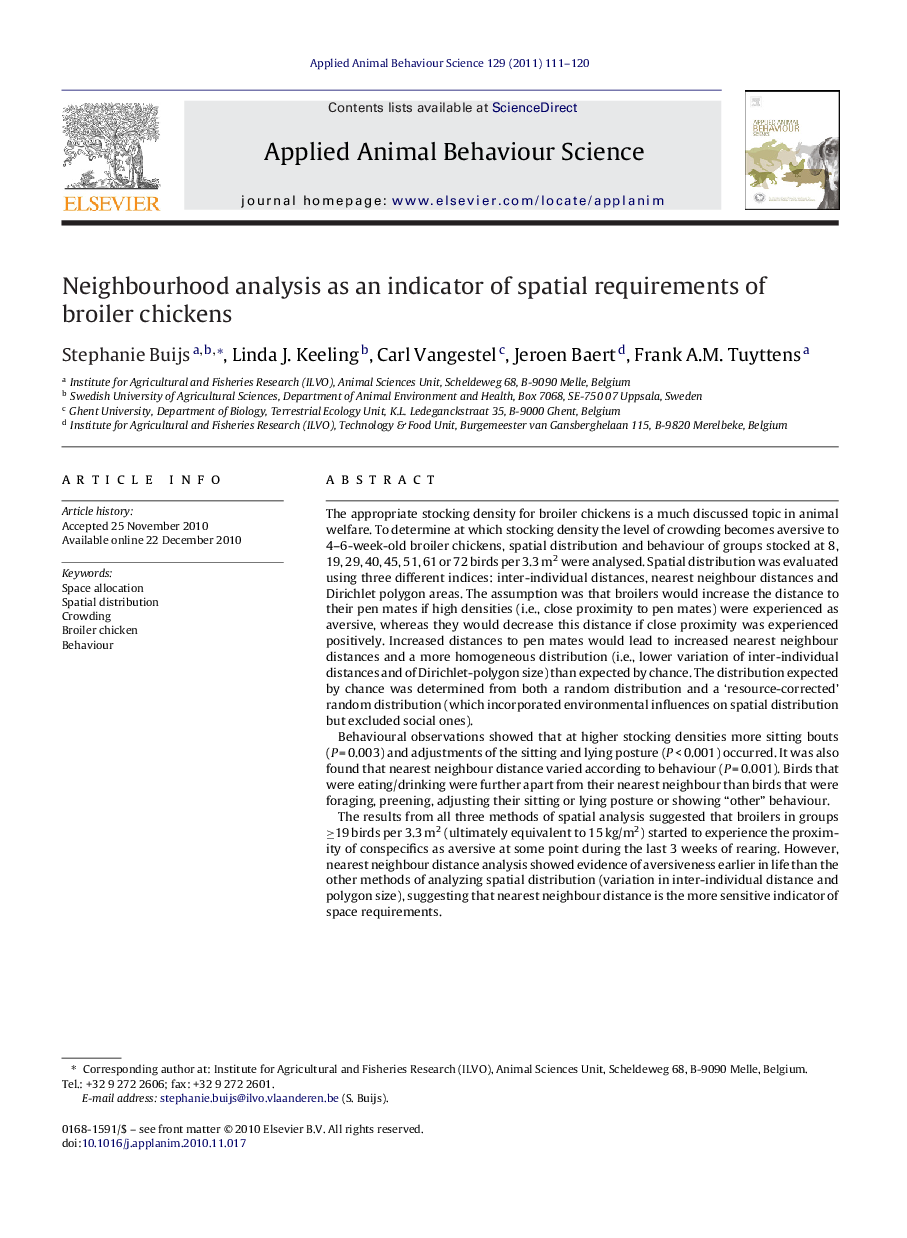| Article ID | Journal | Published Year | Pages | File Type |
|---|---|---|---|---|
| 4523274 | Applied Animal Behaviour Science | 2011 | 10 Pages |
The appropriate stocking density for broiler chickens is a much discussed topic in animal welfare. To determine at which stocking density the level of crowding becomes aversive to 4–6-week-old broiler chickens, spatial distribution and behaviour of groups stocked at 8, 19, 29, 40, 45, 51, 61 or 72 birds per 3.3 m2 were analysed. Spatial distribution was evaluated using three different indices: inter-individual distances, nearest neighbour distances and Dirichlet polygon areas. The assumption was that broilers would increase the distance to their pen mates if high densities (i.e., close proximity to pen mates) were experienced as aversive, whereas they would decrease this distance if close proximity was experienced positively. Increased distances to pen mates would lead to increased nearest neighbour distances and a more homogeneous distribution (i.e., lower variation of inter-individual distances and of Dirichlet-polygon size) than expected by chance. The distribution expected by chance was determined from both a random distribution and a ‘resource-corrected’ random distribution (which incorporated environmental influences on spatial distribution but excluded social ones).Behavioural observations showed that at higher stocking densities more sitting bouts (P = 0.003) and adjustments of the sitting and lying posture (P < 0.001) occurred. It was also found that nearest neighbour distance varied according to behaviour (P = 0.001). Birds that were eating/drinking were further apart from their nearest neighbour than birds that were foraging, preening, adjusting their sitting or lying posture or showing “other” behaviour.The results from all three methods of spatial analysis suggested that broilers in groups ≥19 birds per 3.3 m2 (ultimately equivalent to 15 kg/m2) started to experience the proximity of conspecifics as aversive at some point during the last 3 weeks of rearing. However, nearest neighbour distance analysis showed evidence of aversiveness earlier in life than the other methods of analyzing spatial distribution (variation in inter-individual distance and polygon size), suggesting that nearest neighbour distance is the more sensitive indicator of space requirements.When uneven use of the different areas within the pen was reflected in the expected distribution (i.e., for comparisons to the resource-corrected random distribution) different results were obtained than when such measures were omitted (i.e., for comparisons to the random distribution). As such, this study emphasises the importance of accounting for environmental influences on distribution within a pen.
